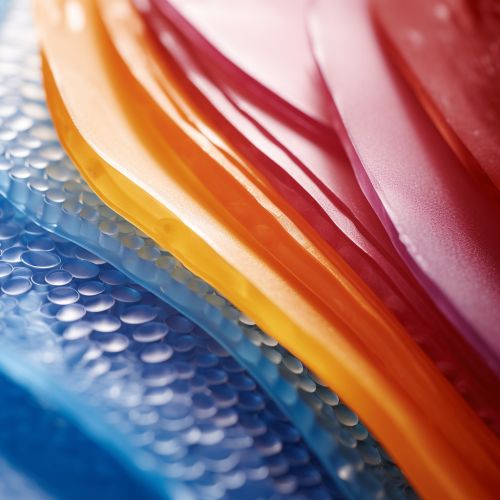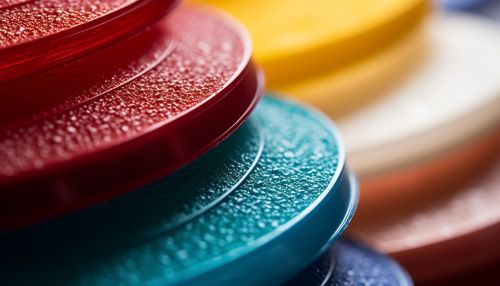Bioplastics
Introduction
Bioplastics are a type of plastic derived from renewable biomass sources, such as vegetable fats and oils, corn starch, straw, woodchips, food waste, etc. Unlike traditional plastics, which are derived from petroleum, bioplastics are made from sustainable sources and are often biodegradable. This makes them an attractive alternative to traditional plastics, especially in the context of increasing environmental concerns.
History
The concept of bioplastics is not new. In fact, the first man-made plastics were actually bioplastics. In the mid-19th century, a British inventor named Alexander Parkes developed a material he called Parkesine, which was made from cellulose, a plant-based polymer. This material could be heated and molded, and it retained its shape when cooled - a key characteristic of modern plastics. However, the production of Parkesine was expensive, and the material was prone to cracking, which limited its commercial viability.
Types of Bioplastics
Bioplastics can be classified into two main types: biodegradable and non-biodegradable.
Biodegradable Bioplastics
Biodegradable bioplastics are designed to break down in the environment over time. They are often made from plant materials like corn starch, potato starch, and cellulose. These materials can be broken down by microorganisms in the environment, resulting in natural byproducts like water and carbon dioxide.


Non-Biodegradable Bioplastics
Non-biodegradable bioplastics, on the other hand, are made from plant materials but do not break down in the environment. These types of bioplastics are often used in applications where durability is important, such as in the automotive and electronics industries.
Production Process
The production process for bioplastics varies depending on the type of bioplastic and the raw materials used. However, the general process involves extracting the raw materials, processing them into a polymer, and then molding the polymer into the desired shape.
Extraction
The first step in the production of bioplastics is the extraction of the raw materials. This often involves growing crops like corn or potatoes, harvesting them, and then processing them to extract the starch. In the case of cellulose-based bioplastics, the raw material is often wood chips or other forms of plant waste.
Processing
Once the raw materials have been extracted, they are processed into a polymer. This involves breaking down the starch or cellulose into its constituent molecules and then reassembling them into a polymer chain. This process is often facilitated by the use of heat, pressure, and catalysts.
Molding
After the polymer has been formed, it is then molded into the desired shape. This can be done through a variety of methods, including injection molding, blow molding, and extrusion.
Applications
Bioplastics are used in a wide range of applications, from packaging to automotive parts. Some of the most common uses for bioplastics include:
- Packaging: Biodegradable bioplastics are often used in packaging applications, as they can be composted after use. This reduces the amount of waste that ends up in landfills.
- Agriculture: Biodegradable bioplastics are also used in agriculture, where they can be used to make mulch films. These films are laid over the soil to help retain moisture and prevent weed growth, and they can be left to decompose in the field after use.
- Automotive: Non-biodegradable bioplastics are often used in the automotive industry, where they can be used to make durable parts like dashboards and bumpers.
- Electronics: Non-biodegradable bioplastics are also used in the electronics industry, where they can be used to make casings for devices like smartphones and laptops.
Environmental Impact
The environmental impact of bioplastics is a complex issue. On one hand, bioplastics are made from renewable resources and are often biodegradable, which can reduce their environmental impact compared to traditional plastics. However, the production of bioplastics can also have significant environmental impacts.
Pros
One of the main advantages of bioplastics is that they are made from renewable resources. This means that the raw materials for bioplastics can be grown and harvested on a regular basis, reducing our reliance on finite resources like petroleum.
In addition, many bioplastics are biodegradable. This means that they can be broken down by microorganisms in the environment, reducing the amount of waste that ends up in landfills.
Cons
However, the production of bioplastics can also have significant environmental impacts. For example, growing the crops needed for bioplastics can require large amounts of land, water, and fertilizers, which can have negative impacts on the environment.
In addition, while many bioplastics are biodegradable, this does not mean that they will break down in any environment. Many bioplastics require specific conditions to decompose, and if these conditions are not met, the bioplastics can persist in the environment for long periods of time.
Future of Bioplastics
The future of bioplastics looks promising. With increasing environmental concerns and a growing demand for sustainable products, the market for bioplastics is expected to grow significantly in the coming years.
One area of potential growth is in the development of bioplastics that can be used in more demanding applications. Currently, many bioplastics lack the strength and durability of traditional plastics, limiting their use in certain applications. However, researchers are working on developing new types of bioplastics that can match or even surpass the performance of traditional plastics.
In addition, there is also potential for growth in the development of bioplastics that can decompose under a wider range of conditions. This would make bioplastics more environmentally friendly, as they could be composted or recycled more easily.
